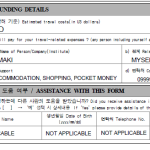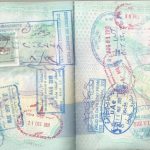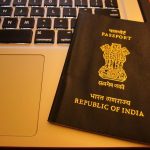Your Go-to Guide for Getting a Schengen Visa
India is one of the most important markets for European Tourism, with over 10 million Indians visiting Europe every year. Research suggests that this number is set to reach 15 million by 2020. With great deals easily available on a dream European getaway, there is no reason to not plan a vacation right away. But before that, it’s time getting a Schengen visa!
Schengen Area
There are 26 member states that require the Schengen Visa — Austria, Belgium, The Czech Republic, Denmark, Estonia, Finland, France, Germany, Greece, Hungary, Iceland, Italy, Latvia, Liechtenstein, Lithuania, Luxembourg, Malta, The Netherlands, Norway, Poland, Portugal, Slovakia, Slovenia, Spain, Sweden and Switzerland.

Getting a Schengen Visa
Visa Type
If you wish to travel to the Schengen Area, you have to apply for a short-term Schengen tourist visa, which is usually of two types—Type A and Type C. This tourist visa can give you a single entry or multiple entry access, depending on the kind of visa you’re applying for. The multiple entry visa is valid for up to 3 months.
If you plan to visit more than one country, you need to apply to the embassy/consulate of the country you will be staying at for the longest period.
Documents Required

Schengen Visa Application Form
While there might be a few additions to the general list of documents, depending on the country you’re travelling to, this is what you’re required to be ready with:
- Application Form – this has to be downloaded from official website. You can also fill it online and print out a hard-copy. Download here.
- 2 passport size photos – these should have the complete face with ears visible, clicked against a white background. About 70-80% of the picture needs to be filled with the applicant’s face. This will be 35mm x 45mm in size, with a matte finish.
- Passport, and copies of previous visas – your passport must have at least 2 blank pages.
- Travel Insurance confirming a minimum of €30,000 within the entire Schengen area.
- Cover letter – state the purpose of the visit and the itinerary.
- Flight tickets – stating dates, the point of entry and exit.
- Proof of accommodation
- Tickets for travelling within the Schengen area (if applicable)
- Proof of civil status – birth certificate will suffice.
- Bank statement – this needs to show a minimum balance of €3000 over the last 6 months. If you do not have this amount in your bank, you could show a family member’s/guardian’s statement instead, with an accompanying letter stating that they are sponsoring your travel and stay. The bank statement needs to be attested by the bank.
- An employment contract, with a leave letter (if applicable)
- Income Tax Returns for the last 3 years
- Letter from the university (if you’re a student) – this needs to be accompanied by a “no objection” certificate from the university.
- Pension statement (applicable if retired)
Time Taken to Process
The processing time for a Schengen Visa is approximately 10 – 15 working days.
Book an appointment
It is advisable to book an appointment a month in advance in order to ensure smooth preparation for your upcoming journey. The earliest you can apply is up to 12 weeks before the date of departure.
Submit the application during the visa interview
You will need to attend the interview in person. Carry your filled-out application form and the necessary documents, and go to the visa application centre at the scheduled time. During the interview you will be asked questions about your trip and purpose. Ensure that you have everything in place.
Pay the fees
Once the visa application form is checked by the officials, you will be asked to pay the visa amount. This can be paid in cash or by card. The cost is roughly INR 6000 and is non-refundable. Visa costs differ for different Schengen countries.
Visa Refusals
The right to issue a Schengen Visa lies with the concerned embassy/consulate. If for some reason your application for a visa is denied, all your documents, including your passport will be returned to you.
















